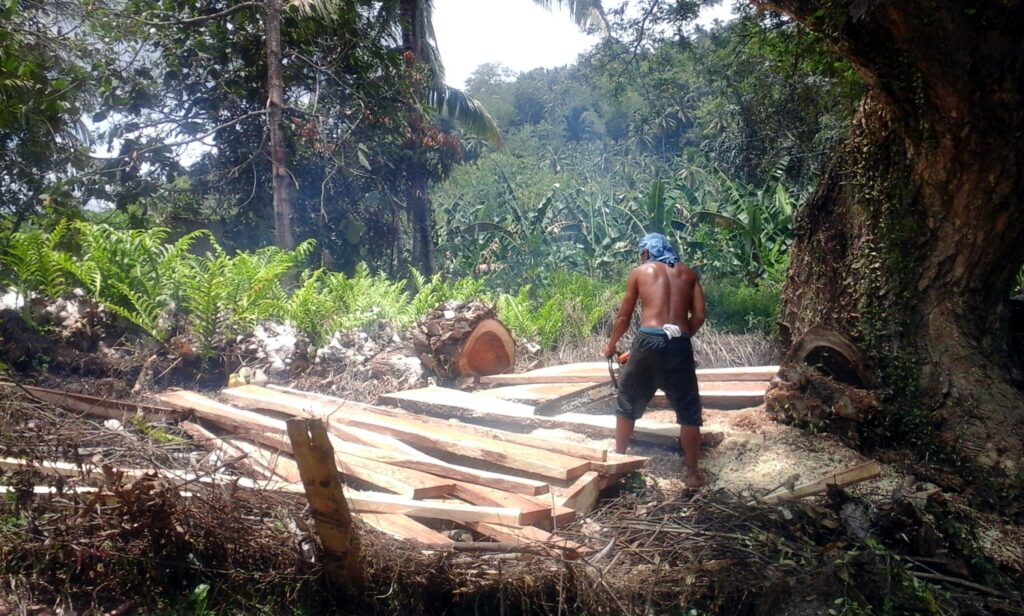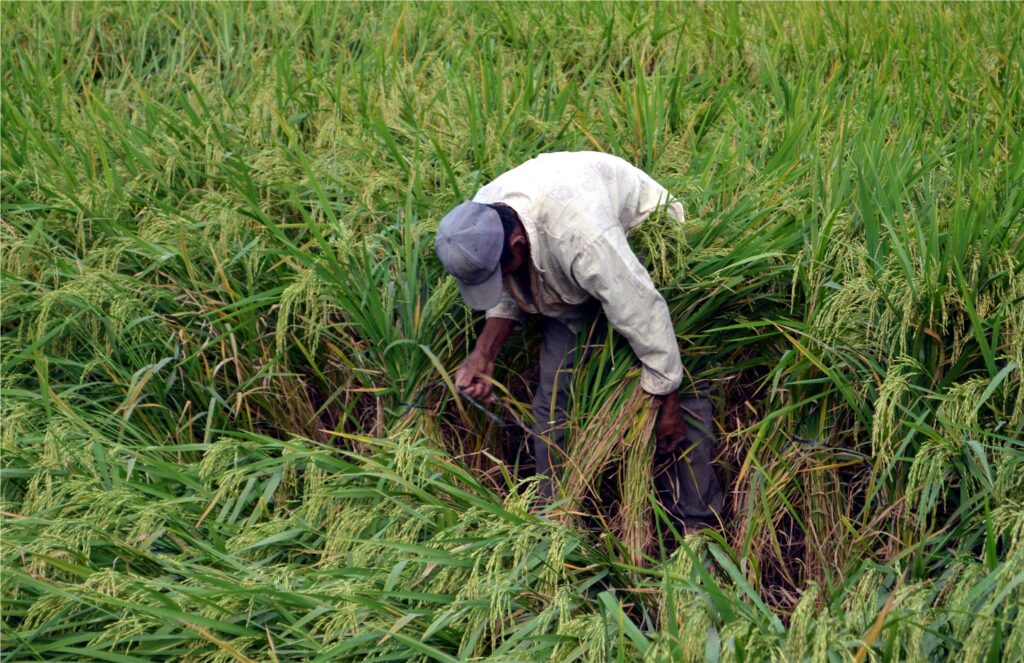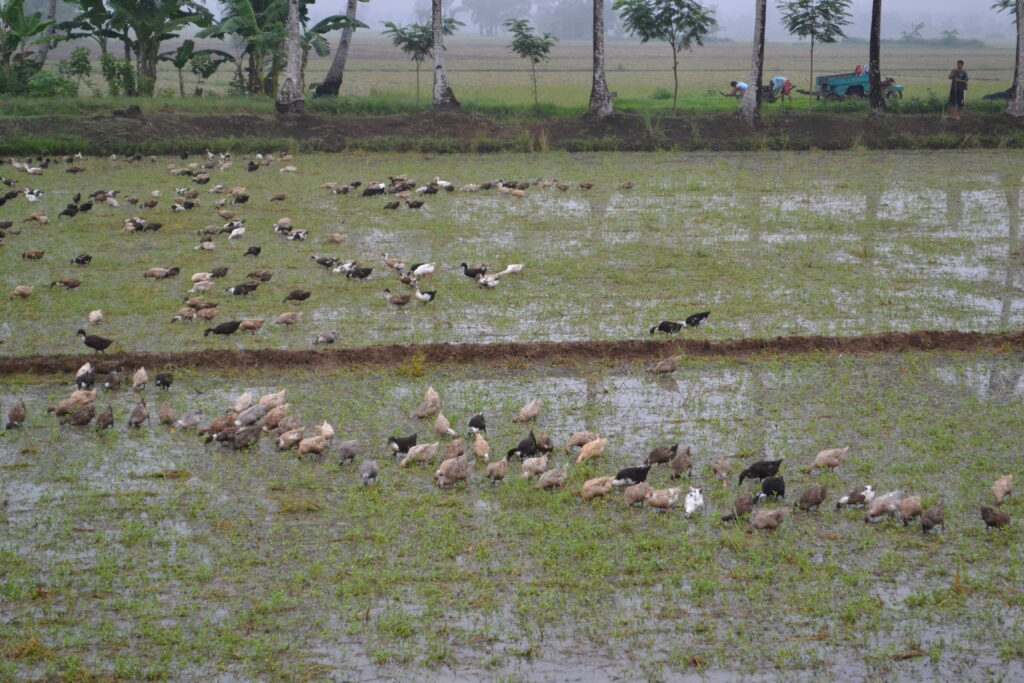Text and Photos by Henrylito D. Tacio
The problem can also be part of the solution – such is the case of agriculture in times of climate change.
A case in point is hamburger, that flat round cake of ground beef served fried or broiled often in a bun. It has been found that hamburger fosters the destruction of the ecologically-fragile tropical forests.
“A hamburger is apparently equal to the destruction of rainforests and conversion of rainfall and transformation of grains and crops into waste,” said Haribon, one of the country’s most outspoken environmental groups, in a statement.
Hamburgers come from cattle, which are raised in areas that used to teem with forests.
“During the eighties, two factors led to increased exports of beef from the tropical region of Latin America with the consequent aftermath of accelerated deforestation of the Amazon,” states the website of World Rainforest Movement. “On the one hand, increased consumption of beef in the countries of the North (particularly for fast food chains in the United States) and on the other, lower prices of land and labor in the tropical countries of Latin America, making the final product cheaper.”
The rape of Amazon forest
In a report, the Bogor-based Center for International Forestry Research has identified the expansion of cattle raising as “one of the factors responsible for the recent increase in the destruction of the Brazilian Amazon forest.”
Once the trees are cut and burned, carbon dioxide – one of the culprits of climate change – is released into the atmosphere. “Forests are an important part of the planet’s carbon cycle, containing three-quarters of all the carbon stored in vegetation on land,” the London-based Panos Institute said.

“The reason that logging is so bad for the climate is that when trees are felled they release the carbon they are storing into the atmosphere, where it mingles with greenhouse gases from other sources and contributes to global warming accordingly,” stresses Scientific American.
Greenhouse gases
Carbon dioxide (CO2) is the most important greenhouse gas. The London-based Panos Institute reported that the concentration of CO2 in the atmosphere rises steadily year after year and is now 30% higher than 200 years ago.
Aside from CO2, other greenhouse gases include chlorofluorocarbons (from air conditioners and refrigerators), methane gas (from landfills and feedlots), and nitrogen compounds. Ground-level ozone, produced by burning fossil fuels, is also considered a greenhouse gas.
Climate change is bad news for the Philippines, which has more than 7,000 islands. “The Philippines is the third most vulnerable country to weather-related extreme events,” says the World Bank report, Getting a Grip on Climate Change in the Philippines.
Among the most apparent consequences of climate change are sea-level rise, less rainfall, drought, and floods. All these affect food production. “Despite the technological advances in the second half of the 20th century, agriculture remains to be one of the most vulnerable sectors to climate change,” writes Apple Jean C. Martin in policy advocacy.

“Agriculture is extremely vulnerable to climate change,” states the Washington-based International Food Policy Research Institute (IFPRI). “Higher temperatures eventually reduce yields of desirable crops while encouraging weed and pest proliferation. Changes in precipitation patterns increase the likelihood of short-run crop failures and long-run production declines.”
Filipinos facing hunger
Currently, the Philippines is home to more than 100 million Filipinos. “With decreasing land area devoted to agriculture, higher prices of agricultural inputs, lesser people engaging into agriculture and education in agriculture, and now, the advent of climate change, feeding the nation is a huge challenge,” writes Amavel A. Velasco in an article which appeared in BAR Digest, a publication of the Bureau of Agricultural Research.
The country’s population, according to the Department of Agriculture, is predominantly rural (70%), and two-thirds of the population depends on farming for their livelihood. In terms of employment, about one-half of the labor force is engaged in agricultural activities.

Already, the Philippines is experiencing some wraths of the global phenomenon: sea-level rise; stronger storms, floods, and droughts; and ocean acidification, according to the World Bank report. “Food security is threatened as land and nursery areas for plants, trees, and fisheries are affected by climate change,” the report points out.
Rice and methane
Since it is part of the problem, can agriculture help minimize the impact of the consequences?
Take the case of rice, the staple food of most Filipinos. Rice fields have been cited as one of the major contributors to methane in the atmosphere. The journal Science reported that the atmospheric concentration of methane has more than doubled during the last 300 years and is increasing at an annual rate of about one percent each year.
“Rice is a plant that grows best in wet soil, with its roots flooded,” says L. Hartwell Allen, an American soil scientist at the Crops Genetics and Environmental Research Unit in Gainesville, Florida. “But flooded rice crops emit substantial amounts of methane to the atmosphere.”
Scientists explain that long-term flooding of the fields cuts the soil off from atmospheric oxygen and causes anaerobic fermentation of organic matter in the soil. During the wet season, rice cannot hold the carbon in anaerobic conditions. The microbes in the soil convert the carbon into methane which is then released through the respiration of the rice plant or through the diffusion of water.
On the other hand, the decomposition of organic material in flooded rice fields produces methane, which then escapes to the atmosphere during the growing season. “Traditionally, farmers flood their rice fields continuously and incorporate 4-5 tons of rice straw per hectare at land preparation,” says a report from the Philippine Council for Agriculture, Aquatic and Natural Resources Research and Development (PCAARRD). “Every year, these practices release 5,883 tons of methane to the atmosphere.”
Duck-rice integration
One way of checking the release of methane into the atmosphere is by raising ducks in rice fields. Some farmers in Zamboanga del Sur are doing this.
“Under the system, ducklings are released to rice fields to graze and feed,” writes Nonoy E. Lacson in a report. “The paddling movement of the ducks in the rice fields increases the rice tillers, in effect raising annual yield by as much as 10-15%. Besides their paddling, ducks also eat the insects and unwanted weeds in the rice field.”

Some studies conducted in China showed that the constant paddling of ducks in rice fields help contain the methane and nitrous oxide to be released into the atmosphere.
In addition, the integrated rice-duck farming system is one of the best strategies in increasing rice productivity, according to the Department of Agriculture. For one, it reduces labor for farmers, and second, it lessens the use of commercial fertilizers and chemicals.
“The integrated rice-duck technology reduces the use of chemicals,” the agriculture department pointed out. “Since ducks are grown alongside rice paddies, they eat harmful pests at the same time their dung fertilizes the soil. Their paddling movement cultivates the soil and destroys the weeds. Its benefits to the farmers are immediately felt and tangible.”
Planting pulses
Pulses – those annual crops that yield between one and 12 grains per seed – are not popular among Filipinos. But eating and planting them could help lessen the production of greenhouse gases released into the atmosphere.
Pulses utilize soil bacteria to draw nitrogen from the air. This natural process replaces the need to add nitrogen fertilizers in pulse crops, which means pulses use half the energy inputs of other crops.
“When soil is fertilized with nitrogen in the form of manure, fertilizer, or crop residue,” the UN Food and Agriculture Organization (FAO) explained, “soil microorganisms convert some of this nitrogen into nitrous oxide, which is a powerful greenhouse gas.”
Nitrous oxide is 300 times more potent than carbon dioxide and represents around 46% of the greenhouse gas emissions from global agriculture, according to the United Nations Environment Program.
“Since greenhouse gas emissions related to crop production are largely driven by nitrogen fertilizers, nitrogen-fixing pulse crops have a lower carbon footprint compared to other crops,” FAO said.

